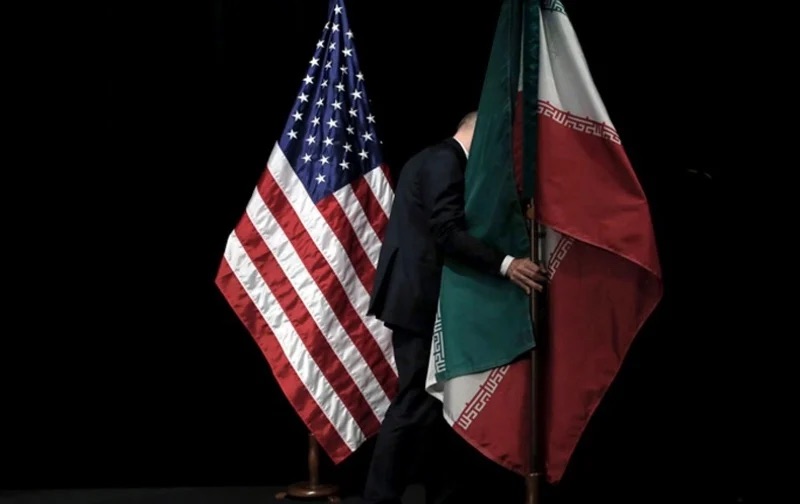
Indeed, Iran and the United States just concluded an indirect round of talks in Oman. This development comes at a time of increased conflict between Iran and Israel. There is the complicated context of Iran’s nuclear program. This program has continued to develop evermore since the 2015 nuclear deal’s unraveling. This article explores the complexities surrounding these negotiations, the regional implications of Iran’s military alliances, and the potential outcomes for both nations.
Iran has taken major blows to its regional hegemony—especially in regard to its ties with Israel. In response to these challenges, the Islamic Republic has bolstered its informal coalition with groups such as Lebanon’s Hezbollah, the Islamic Resistance in Iraq, and Yemen’s Houthi rebels. These alliances provide an example of how Iran plans to exert its regional power and influence in the face of external pressures.
With indirect talks ongoing in Oman, there is an opportunity for real dialogue. This occurs amid a backdrop of two countries that have not maintained formal diplomatic ties since the founding of the Islamic Republic in 1979. These talks are extremely important. Iranian officials have gone to extraordinary lengths to raise the alarm, apparently preparing the public and military for potential incoming military strikes against Iranian nuclear facilities from the US or Israel.
The Status of Iran’s Nuclear Program
Ever since the collapse of the 2015 nuclear agreement, Iran’s nuclear ambitions have advanced at an alarming pace. As of March, Iran possessed approximately 275 kilograms of uranium enriched to 60% purity. This vital information was provided by the International Atomic Energy Agency (IAEA). International observers consider this level of enrichment to be alarming. Some nuclear non-proliferation experts have claimed that Iran would be able to develop an atomic bomb in as few as three months.
The 2015 agreement was designed to curtail Iran’s ability to develop nuclear weapons in return for easing a range of international sanctions. With the United States pulling out of the agreement under former President Donald Trump, the deal has mostly fallen apart. Among his many pledges, Trump has promised to cut a “better” deal with Tehran. Above all, he insists that the new deal should prioritize stopping the sale of a nuclear bomb, averting war, and opening enterprise for American businesses.
“excessive demands and attitude of the other side” – Seyyed Mohammad Marandi
In light of these concessions, Iranian officials have recently said they are open to discussing diplomatic solutions when it comes to their nuclear program. They have indicated that they are prepared to give negotiations a “genuine chance,” signaling an openness to dialogue despite their grievances with U.S. policies.
Regional Dynamics and Military Preparedness
What’s unfolding now is nothing short of a stunning reversal in regional fortunes. Second, their cooperative ally, Syria, has become an unreliable partner. This shift complicates Iran’s strategic calculations as it navigates the complex web of alliances and rivalries in the Middle East.
In light of these escalating threats, Iranian military leadership seems more than ever fixated on prospective military showdowns. The American military presence in the region has increased, with the United States sending an aircraft carrier to the Mideast. This latest provocation is part and parcel of ongoing military threats by Trump to attack Iran.
Hezbollah, Iraqi Shi’a militias and/or Iranian proxies and Houthi rebels constitute an informal coalition. This tenuous alliance emphasizes Iran’s plan to extend its power and influence simultaneously on several fronts. These groups are Iranian proxies and will continue to be so. For one, they further enhance Iran’s deterrence capabilities against perceived threats from Israel and the United States.
Implications for US-Iran Relations
Even as these indirect talks continue, experts are focusing on what they mean for U.S.-Iran interactions moving forward. Trita Parsi is the leading expert on U.S.-Iran relations. He makes the case that through a better negotiation process, the United States stands to gain tremendous advantages. He proposes that it would produce a “triple win.” It would provide the opposite of an Iranian nuclear bomb, allow us to avoid going to war with Iran, and create enormous commercial prospects for American businesses.
The stakes are high as both countries continue along this delicate conversation. As they attempt to come to some sort of stabilization, the threat of increased sanctions or a heavier military hand hangs overhead. This makes a difficult situation even more fraught.
Author’s Opinion
While these indirect talks present an opportunity for diplomacy, the underlying tensions—especially concerning Iran’s nuclear ambitions—remain high. With military threats looming and alliances shifting, both the U.S. and Iran must navigate carefully. The stakes are not only about nuclear weapons but also about regional stability and future global peace.
Featured image credit: FMT
Follow us for more breaking news on DMR
